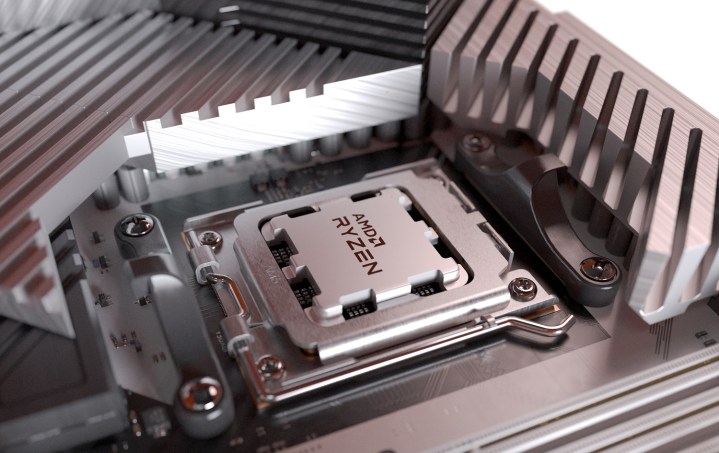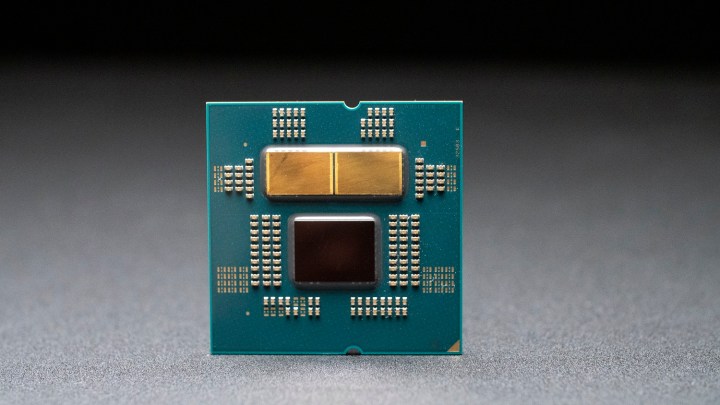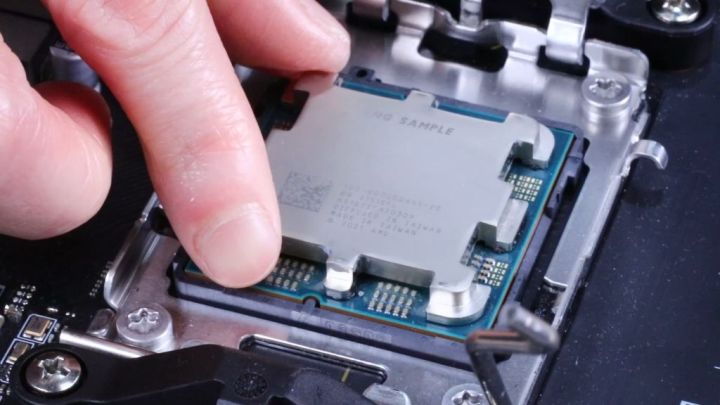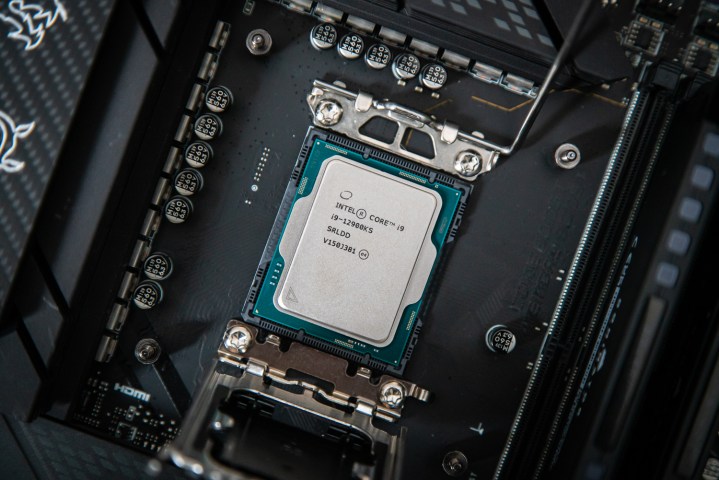When the Intel Core i9-12900K came out in late 2021, it was Intel’s first true flagship CPU since its 2018 Core i9-9900K. It actually beat AMD’s flagship Ryzen 9 5950X in both single- and multi-threaded performance, and the 12900K remains the fastest mainstream desktop CPU to this day and one of the best CPUs in general.
But that could end, as AMD is launching its next-generation Ryzen 7000 processors, including its flagship Ryzen 9 7950X, which aims to dethrone the 12900K once and for all. Although Ryzen 7000 reviews won’t be out until the CPUs release on September 27, the specs and expected performance show that AMD’s new CPU could give the Core i9-12900K a serious run for its money.
Pricing and availability

The Core i9-12900K is available now, and although it launched for $589, it’s going for $569 at most retailers. The 12900KF, which has no integrated graphics but is otherwise identical, is going for $549. Meanwhile, the Ryzen 9 7950X launches on September 27 for $699, over $100 more than the 12900K, but also $100 less than last-generation’s 5950X when it launched.
Being $100 more expensive is actually the best case scenario for the 7950X, as supply could be very low initially. However, AMD has already made statements that supply for Zen 4 CPUs (such as Ryzen 7000) will be sufficient. Responding to concerns about supply that led to the CPU and GPU shortages over the last couple of years, AMD CEO Lisa Su said the company had “dramatically increased its overall capacity … we don’t expect any supply constraints.”
About $130 separates the two processors at launch, but it’s important to remember that the Core i9-12900K has been on the market for nearly a year. It will see more frequent sales and potentially price cuts as Intel prepares its next-gen processors.
Specs

While a spec sheet is certainly interesting to look at, it can’t capture the full picture of the differences and similarities between these two CPUs. The 7950X would appear to be nothing more than an overclocked 5950X, but the newer chip features the brand new Zen 4 architecture. Furthermore, although the 12900K has 16 cores just like the 7950X, these are divided evenly between performance and efficiency cores, so the 12900K isn’t exactly a 16-core CPU in the same way the 7950X is.
| AMD Ryzen 9 7950X | Intel Core i9-12900K | |
| Cores | 16 | 16 (8P + 8E) |
| Base frequency | 4.5GHz | 3.2GHz (P-core), 2.4GHz (E-core) |
| Boost frequency | 5.7GHz | 4.9GHz all-core, 5.2GHz single-core |
| L3 cache | 64MB | 30MB |
| Base power | 170W | 125W |
| Max boost power | 170W | 241W |
Clock speed is also difficult to compare as AMD and Intel CPUs don’t boost the same way. The 7950X’s 5.7GHz boost clock speed looks amazing compared to the 5.2GHz of the 12900K, but this is an opportunistic clock speed that the 7950X can hit only in a single-threaded workload. All-core clock speeds and the average clock speed in a single-threaded workload are bound to be much lower, perhaps not much higher than the frequencies the 12900K is capable of.
Another spec to examine is power. On paper, the 7950X seems to draw significantly less power than the 12900K, but AMD doesn’t define TDP like Intel. Actual power consumption is TDP times 1.35, which means the 7950X can draw up to 230 watts, just a little less than the 12900K. Of course, this is only for workloads that can take advantage of every single core; in games, both CPUs should run at much lower power. As AMD and Intel raise power consumption in order to achieve higher performance, high-quality power supplies are becoming more and more necessary for using these flagship CPUs.
Performance

The 12900K is out, and we’ve had a chance to test it (as well as its supercharged Core i9-12900KS variant), but the 7950X won’t be out until September 27. All we have at the moment is what AMD showed us at the Ryzen 7000 announcement event. As usual, you shouldn’t take AMD’s own numbers at face value, and you should wait for third-party testing to validate results.
Let’s start with productivity and compute benchmarks — AMD gives us just a few data points to examine. In the multi-threaded Chaos V-Ray benchmark, AMD claims the 7950X is 57% faster than the 12900K, but this is presented more as a best case scenario rather than the average benchmark. AMD also says the 7950X has “44% more compute for creators” but didn’t elaborate on how it came to that figure, though we can probably assume it’s based on multi-threaded performance across a few tests.
AMD did provide us with a Geekbench 5.4 benchmark, though only for single-thread. The company claims the 7950X achieves a score of 2,275, and if that’s to be believed, it’s significantly faster than the 12900K, which achieves about 2,040. This is probably the most believable benchmark AMD has given us, though keep in mind the company did test the 7950X in a very high-end PC.

As for gaming performance, we don’t have a 7950X to 12900K comparison, but AMD does claim the less-powerful Ryzen 5 7600X is 11% faster on average than the 12900K in gaming, so we can probably assume that is also true of the 7950X. This claim isn’t particularly suspect, as Ryzen 7000 has just as much L2 cache as the 12900K, as well as more than double the L3 cache and higher clock speeds.
Features

The 12900K had a few advantages over the Ryzen 5000: PCIe 5.0 support, DDR5 support, and superior AVX support. Ryzen 7000 resolves all of that by bringing support for all of these features, and in some ways, AMD is actually doing it better than Intel.
While both the 12900K and the 7950X support PCIe 5.0, you can only use PCIe 5.0 for solid-state drives (SSDs) on current-gen Intel motherboards, while higher-end AMD motherboards will support PCIe 5.0 GPUs in addition to PCIe 5.0 SSDs. PCIe 5.0 isn’t important for graphics cards now, but it could be in the future.
AMD also has slightly better DDR5 support, with the highest supported clock speed being 5,200MHz on AMD boards, while Intel boards go up to just 4,800MHz. That being said, this isn’t a huge advantage for AMD since everyone can just overclock their RAM, whether it’s with XMP, AMP, DOCP, or the new EXPO one-click overclocking feature coming to some DDR5 kits.
Finally, AMD is adding AVX-512 support, which is an extended CPU instruction set that helps improve performance. Intel CPUs run native AVX-512, which is powerful but requires the CPU cores to drop down to low frequencies. AMD claims its CPUs won’t be running at lower clock speeds due to using two 256-bit AVX modules, rather than the native 512-bit module Intel CPUs use.
Editors’ Recommendations
